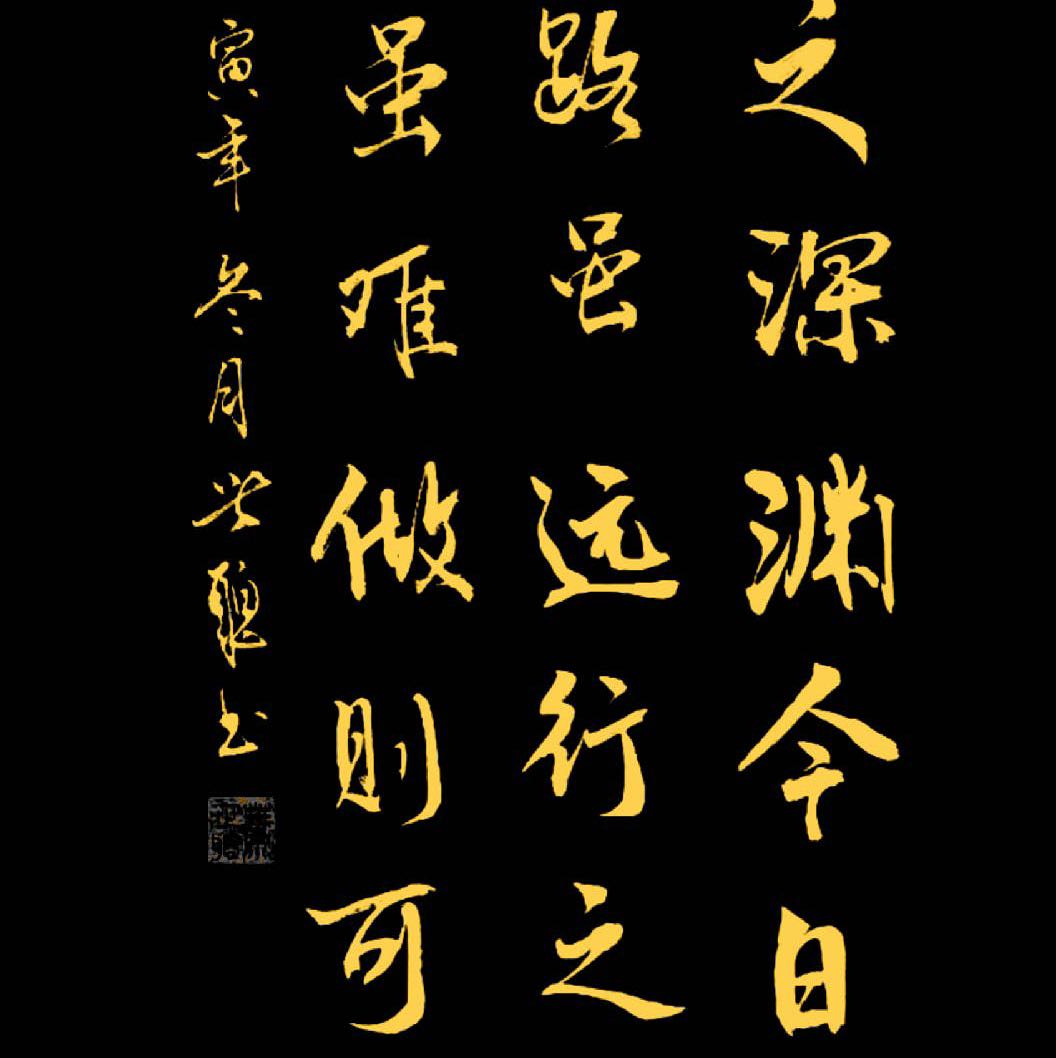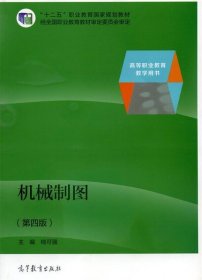
基础物理学
¥ 36.66 4.9折 ¥ 75 九五品
仅1件
作者(美)哈里德 等著,李学潜,方哲宇 改编
出版社高等教育出版社
ISBN9787040228649
出版时间2008-06
版次1
装帧平装
开本16开
纸张胶版纸
页数827页
字数99999千字
定价75元
上书时间2024-08-31
- 最新上架
商品详情
- 品相描述:九五品
- 商品描述
-
基本信息
书名:基础物理学
定价:75.00元
作者:(美)哈里德 等著,李学潜,方哲宇 改编
出版社:高等教育出版社
出版日期:2008-06-01
ISBN:9787040228649
字数:1600000
页码:827
版次:1
装帧:平装
开本:大16开
商品重量:
编辑推荐
内容提要
本书是哈里德等人编写的Fundamentals of pbysics(7tbEdition)的改编版。哈里德一书是一套典型的美国教材,在我国也有很高的知名度。原书物理原理阐述通俗易懂,图文并茂内容丰富。编者在改编时保持了原作的风格和特色,根据国内高校教学的基本特点,系统地阐述了力学、热学、光学、电磁学等基本规律和基本概念,并初步介绍了相对论原理、原子物理、半导体物理等近现代物理内容。删掉与中学物理重复的部分,使整体内容紧凑合理,并在每章末尾安排了较多的思考题和习题,使本书在理工科教学中更具有实用性,普适性。本书可作为高等学校物理专业基础课双语教材,也可供其他理工科类专业有关教师、学生参考。
目录
1 Measurement 1-1 What Is Physics? 1-2 Measuring Things 1-3 The International System ofUnits 1-4 Changing Units 1-5 Length 1-6 Time 1-7 Mass Problems2 Motio 2-1 What Is Physics? 2-2 Vecto and Scala 2-3 Multiplying Vecto 2-4 Motio 2-5 Position and Displacement 2-6 Average Velocity and ItantaneousVelocity 2-7 Acceleratio 2-8 Cotant Acceleration: A SpecialCase 2-9 Graphical Integration in MotionAnalysis 2-10 Projectile Motio 2-11 Projectile Motion Analyzed 2-12 Uniform Circular Motio 2-13 Relative Motio Questio Problems3 Force 3-1 What Is Physics? 3-2 Newtonian Mechanics 3-3 Newton's Fit Law 3-4 Force 3-5 Mass 3-6 Newton's Second Law 3-7 Newton's Third Law 3-8 Applying Newton's Laws 3-9 Some Particular Forces 3-10 Frictio 3-11 The Drag Force and TerminalSpeed 3-12 Uniform circular Motio Questio Problems4 Energy and Work 4-1 What Is Physics? 4-2 What Is Energy? 4-3 Kinetic Energy 4-4 Work 4-5 Work and Kinetic Energy 4-6 Work Done by the Force 4-7 Power 4-8 Work and Potential Energy 4-9 Path Independence of CoervativeForces 4-10 Determining Potential EnergyValues 4-11 Coervation of Mechanical Energy 4-12 Work Done on a System by an ExternalForce 4-13 Coervation of Energy Questio Problems5 Center of Mass and Linear Momentum 5-1 What Is Physics? 5-2 The Center of Mass 5-3 Newton's Second Law for a System ofParticles 5-4 Linear Momenttma 5-5 The Linear Momentum of a System ofParticles 5-6 Collision and Impulse 5-7 Coervation of Linear Momentum 5-8 Momentum and Kinetic Energy inCollisio 5-9 Inelastic Collisio in OneDimeio 5-10 Elastic Collisio in One Dimeio 5-11 Collisio in Two Dimeio 5-12 Systems with Varying Mass: A Rocket Questio Problems6 Rotation and Angular Momentum 6-1 What Is Physics? 6-2 Equilibrium 6-3 The Rotational Variables 6-4 Are Angular Quantities Vecto? 6-5 Relating the Linear and AngularVariables 6-6 Kinetic Energy of Rotatio 6-7 Calculating the RotationalInertia 6-8 Newton's Second Law for Rotatio 6-9 Work and Rotational KineticEnergy 6-10 Rolling as Tralation and RotationCombined 6-11 The Kinetic Energy of Rolling 6-12 The Forces of Rolling 6-13 Torque Revisited 6-14 Angular Momentum 6-15 Newton's Second Law in Angularorm 6-16 The Angular Momentum of a System ofParticles 6-17 The Angular Momentum of a Rigid BodyRotating About a Fixed Axis 6-18 Precession of a Gyroscope Questio Problems7 Gravitatio 7-1 What Is Physics? 7-2 Newton's Law of Gravitatio 7-3 Gravitation and the Principle ofSuperpositio 7-4 Gravitation Near Earth's Surface 7-5 Gravitation Iide Earth 7-6 Gravitational Potential Energy 7-7 Planets and Satellites: Kepler'sLaws 7-8 Satellites: Orbits and Energy 7-9 Eitein and Gravitatio Questio Problems8 Oscillatio 8-1 What Is Physics? 8-2 Simple Harmonic Motio 8-3 The Force Law for Simple HarmonicMotio 8-4 Energy in Simple Harmonic Motio 8-5 An Angular Simple HarmonicOscillator 8-6 Pendulums 8-7 Simple Harmonic Motion and UniformCircular Motio 8-8 Damped Simple Harmonic Motio 8-9 Forced Oscillatio and Resonance Questio Problems9 Waves 9-1 What Is Physics? 9-2 Types of Waves 9-3 Travee and Longitudinal Waves 9-4 Wavelength and Frequency 9-5 The Speed of Wave 9-6 Energy and Power of a Wave TravelingAlong a String 9-7 The Wave Equatio 9-8 Standing Waves 9-9 Sound Waves 9-10 Traveling Sound Waves 9-11 Interference 9-12 Inteity and Sound Level 9-13 Sources of Musical Sound 9-14 Beats 9-15 The Doppler Effect 9-16 Supeonic Speeds, Shock Waves Questio Problems10 The Kinetic Theory of Gases 10-1 What Is Physics? 10-2 Avogadro's Number 10-3 Ideal Gases 10-4 Pressure, Temperature, and RMSSpeed 10-5 Tralational Kinetic Energy 10-6 Mean Free Path 10-7 The Distribution of MolecularSpeeds 10-8 The Molar Specific Heats of an IdealGas 10-9 Degrees of Freedom and Molar SpecificHeats 10-10 A Hint of Quantum Theory 10-11 The Adiabatic Expaion of an IdealGas Questio Problems11 The Law of Thermodynamics 11-1 What Is Physics? 11-2 Temperature 11-3 The Zeroth Law of Themodynamics 11-4 Measuring Temperature 11-5 Thermal Expaio 11-6 The Absorption of Heat by Solids andLiquids 11-7 A Closer Look at Heat and Work 11-8 The Fit Law of Thermodynamics 11-9 Heat Trafer Mechanisms 11-10 Irreveible Processes andEntropy 11-11 Change in Entropy 11-12 The Second Law ofThermodynamics 11-13 Entropy in the Real World 11-14 A Statistical View of Entropy Questio Problems12 Electricity 12-1 What Is Physics? 12-2 Electric Charge 12-3 Electric Field 12-4 A Point Charge in an Electric Field 12-5 A Dipole in an Electric Field 12-6 Electric Potential 12-7 Calculating the Potential from theField 12-8 Electric Potential Energy 12-9 Potential of a Charged IsolatedConductor Questio Problems13 Gauss'Law 13-1 What Is Physics? 13-2 Flux 13-3 Flux of an Electric Field 13-4 Gauss' Law 13-5 Gauss' Law and Coulomb's Law 13-6 A Charged Isolated Conductor 13-7 Applying Gauss' Law: CylindricalSymmetry 13-8 Applying Gauss' Law: PlanarSymmetry 13-9 Applying Gauss' Law: SphericalSymmetry Questio Problems14 DC Circuits 14-1 What Is Physics? 14-2 Capacitance 14-3 Capacito in Parallel and inSeries 14-4 Energy Stored in an ElectricField 14-5 Capacitor with a Dielectric 14-6 Electric Current 14-7 Resistance and Resistivity 14-8 Power in Electric Circuits 14-9 "Pumping" Charges 14-10 Calculating the Current in aSingle-Loop Circuit 14-11 Multiloop Circuits 14-12 RC Circuits Questio Problems15 Magnetic Fields 15-1 What Is Physics? 15-2 What Produces a Magnetic Field? 15-3 The Definition orB 15-4 Crossed Fields: Discovery of theElectro 15-5 Crossed Fields: The Hall Effect 15-6 A Circulating Charged Particle 15-7 Cyclotro and Synchrotro 15-8 Magnetic Force on a Current- CarryingWire 15-9 Torque on a Current Loop 15-10 The Magnetic Dipole Moment Questio Problems16 Magnetic Fields Due to Currents 16-1 What Is Physics? 16-2 Calculating the Magnetic Field Due toa Current 16-3 Force Between Two ParallelCurrents 16-4 Ampere's Law 16-5 Solenoids and Toroids Magnetic Fieldof a Solenoid 16-6 A Current-Carrying Coil as a MagneticDipole Questio Problems17 Induction and Inductance 17-1 What Is Physics? 17-2 Two Experiments 17-3 Faraday's Law of Inductio 17-4 Lenz's Law 17-5 Induction and Energy Trafe 17-6 Induced Electric Fields 17-7 Inducto and Inductance 17-8 Self-Inductio 17-9 RL Circuits", 17-10 Energy Stored in a MagneticField 17-11 Energy Deity of a MagneticField 17-12 Mutual Inductio Questio Problems18 Electromagnetic Oscillatio and Alternating Current 18-1 What Is Physics? 18-2 LC Oscillatio, Qualitatively 18-3 The Electrical-MechanicalAnalogy 18-4 LC Oscillatio, Quantitatively 18-5 Damped Oscillatio in an RLCCircuit 18-6 Alter'hating Current 18-7 Forced Oscillatio 18-8 Three Simple Circuits 18-9 The Series RLC Circuit 18-10 Power in Alternating-CurrentCircuits 18-11 Traforme Questio Problems19 MaxweH's Equatio; Magnetism of Matter 19-1 What Is Physics? 19-2 Gauss' Law for Magnetic Fields 19-3 Induced Magnetic Fields 19-4 Displacement Current 19-5 Maxwell's Equatio 19-6 Magnets 19-7 Magnetism and Electro 19-8 Magnetic Materials 19-9 Diamagnetism 19-10 Paramagnetism 19-11 Ferromagnetism Questio Problems20 Electromagnetic Waves 20-1 What Is Physics? 20-2 Maxwell's Rainbow 20-3 The Traveling Electromagnetic Wave,Qualitatively 20-4 The Traveling ElectromagneticWave, Quantitatively 20-5 Energy Traport and the PoyntingVector 20-6 Radiation Pressure 20-7 Polarizatio 20-8 Reflection and Refractio 20-9 Total Internal Reflectio 20-10 Polarization by Reflectio Questio Problems21 Optics 21-1 What Is Physics? 21-2 Images 21-3 Thin Lees 21-4 Optical Itruments 21-5 Light as a Wave 21-6 Diffractio 21-7 Diffraction by a CircularAperture 21-8 Diffraction by a Double Slit 21-9 Diffraction Gratings 21-10 X-Ray Diffractio 21-11 Interference 21-12 Interference from Thin Films 21-13 Michelson's Interferometer Questio Problems22 Relativity 22-1 What Is Physics? 22-2 The Postulates 22-3 Measuring an Event 22-4 The Relativity of Simultaneity 22-5 The Relativity of Time 22-6 The Relativity of Length 22-7 The Lorentz Traformatio 22-8 Some Coequences of the LorentzEquatio 22-9 The Relativity of Velocities 22-10 Doppler Effect for Light 22-11 A New Look at Momentum 22-12 A New Look at Energy Questio Problems23 Quantum Physics 23-1 What Is Physics? 23-2 The Photon, the Quantum ofLight 23-3 Electro and Matter Waves 23-4 Schrrdinger's Equation andHeisenberg's Uncertainty Principle 23-5 Energies of a Trapped ElectronOne-Dimeional Traps 23-6 The Bohr Model of the Hydrogentom 23-7 Some Properties of Atoms 23-8 Angular Momenta and Magnetic DipoleMoments 23-9 The Stern-Gerlach Experiment 23-10 Magnetic Resonance 23-11 The Pauli Exclusion Principle 23-12 Building the Periodic Table 23-13 X Rays and the Ordering of theElements 23-14 Lase and Laser Light Questio Problems24 Conduction of Electricity in Solids 24-1 What Is Physics? 24-2 The Electrical Properties ofSolids 24-3 Iulato 24-4 Metals 24-5 Semiconducto 24-6 The p-n Junctio 24-7 The Junction Rectifier 24-8 The Light-Emitting Diode (LED) 24-9 The Traistor Questio ProblemsAppendices A The International System of Units(SI) B Some Fundamental Cotants ofPhysics C Some Astronomical Data D Conveion Facto E Mathematical Formulas F Properties of the Elements G Periodic Table of the ElementsAwe
作者介绍
序言
-

【封面】
— 没有更多了 —











以下为对购买帮助不大的评价